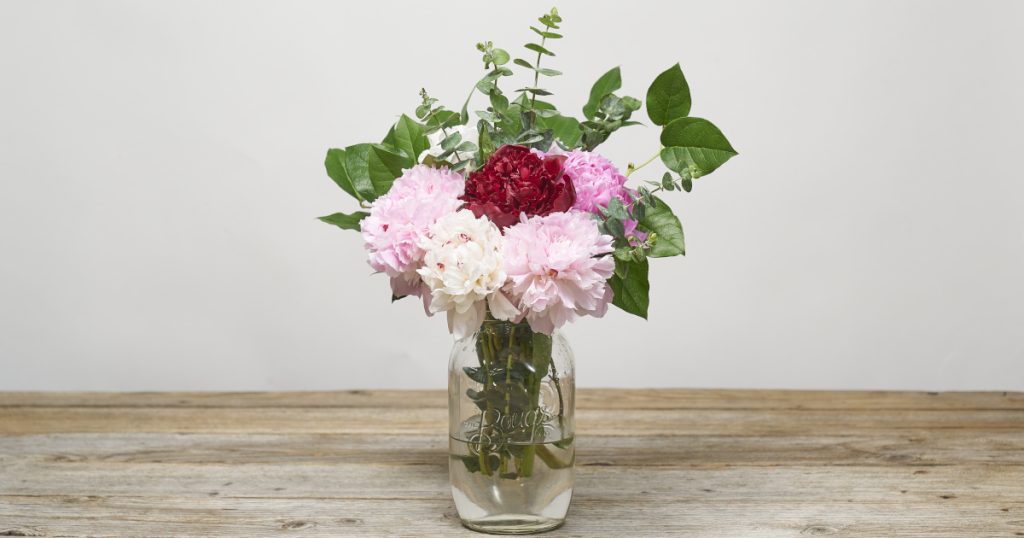There’s a certain magic to bringing fresh flowers into your home. Their vibrant colors, intoxicating scents, and delicate beauty instantly elevate a space. But transforming a simple bunch of blooms into a stunning arrangement isn’t just about tossing them in a vase. It’s a mindful process, a dance between creativity and practical considerations.
So, whether you’re a seasoned florist or a flower arranging novice, here’s a comprehensive guide to putting flowers in a vase and creating an awe-inspiring display.
Gathering Your Supplies
Before you dive into the creative process, gather the necessary tools and materials. Here’s your checklist:
- The Vase: The foundation of your arrangement, the vase should complement the flowers’ style and size. Opt for a tall, slender vase for elegant flowers like lilies or a wider, squat vase for a more rustic, overflowing bouquet.
- Sharp Scissors or Pruners: A clean, sharp cutting tool ensures precise cuts and prevents crushing the stems.
- Fresh Flowers: This is where the magic begins! Choose flowers at their peak bloom, with firm petals and healthy stems.
- Optional Extras: Consider adding visual interest with filler flowers like baby’s breath or greenery like eucalyptus. Flower food can also help extend the life of your arrangement.
Preparing the Flowers
Now it’s time to prepare your blooms for their starring role.
- Clean the Vase: Hygiene matters! Wash the vase with warm, soapy water to remove any bacteria that might shorten the lifespan of your flowers.
- Cut the Stems: Using your sharp tool, cut the stems diagonally at a 45-degree angle. This increases the surface area for water absorption and prevents the stems from resting flat on the vase bottom, which can block water flow.
- Strip Lower Leaves: Remove any leaves that will fall below the water line in the vase. Submerged leaves can rot and contaminate the water.
- Hydrate the Stems: Give your thirsty flowers a drink! Fill a separate container with cool water (ideally room temperature) and allow the stems to soak for at least 30 minutes.
Building Your Arrangement
Here comes the fun part: creating your masterpiece!
- Start with Structure: If you’re using filler flowers or greenery, begin by placing them in the vase to create a base and establish the overall shape of the arrangement.
- Focus on Focal Flowers: Now for the stars of the show! Arrange your main flowers, placing them strategically. Consider height variations and flower placement for a balanced look. You can either cluster them in the center or arrange them asymmetrically for a more dynamic display.
- Filling the Gaps: Once the main flowers are positioned, use filler flowers and greenery to fill any empty spaces and add texture and visual interest. Play with different colors and shapes to create a harmonious composition.
Pro Tip: Rotate the vase as you build your arrangement to ensure flowers are visible from all angles.
Maintaining Your Masterpiece
The work doesn’t stop after you’ve achieved your desired look. Here’s how to keep your floral arrangement flourishing:
- Fresh Water is Key: Every few days, remove the flowers from the vase, recut the stems (diagonally again!), and replace the water with fresh, cool water. This prevents bacteria growth and keeps your flowers hydrated.
- Location Matters: Avoid placing your arrangement in direct sunlight or near drafts, which can cause wilting.
- Keep it Clean: If any flower petals fall into the water, remove them promptly to prevent bacterial growth.
With proper care, your flower arrangement can brighten your home for a week or even longer.
Adding secondary flowers and filler
The main stars of your flower arrangement are undoubtedly the focal flowers, those bold beauties that capture the eye. But don’t underestimate the supporting cast! Secondary flowers and fillers play a crucial role in creating a truly stunning and well-composed display.
Secondary Flowers: Expanding the Color Palette and Adding Depth
They typically have smaller blooms or come in clusters, adding another layer of color and texture to your arrangement. Here’s how to use them effectively:
- Color Harmony: Secondary flowers can echo the colors of your focal flowers or introduce complementary tones. For example, pair pink roses with lavender or white hydrangeas for a romantic feel.
- Texture Contrast: Play with contrasting textures. Combine soft, billowy roses with spiky scabiosa or delicate freesias with bold sunflowers.
- Height Variations: Secondary flowers can bridge the gap between the tallest focal flowers and the greenery. Consider using taller varieties like delphiniums or snapdragons towards the back and shorter ones like lisianthus or waxflowers towards the front.
Filler Flowers and Greenery: The Unsung Heroes
While they may not be the stars of the show, filler flowers and greenery are the backbone of any successful arrangement. They serve several essential purposes:
- Filling the Gaps: Filler flowers, like baby’s breath or solidago, gracefully fill in empty spaces and create a more complete and balanced look.
- Adding Texture and Form: Greenery, such as eucalyptus or ferns, provides a textural contrast and a natural, organic feel. Experiment with different shapes and sizes of leaves for added visual interest.
- Supporting the Structure: Filler flowers and greenery can be used to create a base for your arrangement, helping to hold the focal flowers in place.
Tips for Using Secondary Flowers and Fillers:
- Quantity Matters: Don’t overwhelm your focal flowers! Use secondary flowers and fillers sparingly, focusing on creating a sense of balance and proportion.
- Consider Seasonality: Just like focal flowers, secondary flowers and fillers have their peak seasons. Explore what’s available locally for the freshest and most vibrant options.
- Think Outside the Box: Don’t be afraid to experiment with unusual or unexpected filler options. Try ornamental grasses, berries, or even interesting seed pods for a unique touch.
By incorporating secondary flowers and fillers into your arrangements, you’ll elevate your creations from simple to spectacular. They add depth, dimension, and visual interest, transforming your humble bunch of flowers into a masterpiece that will leave a lasting impression.

Creative Ideas for Flower Arrangements
Beyond the basic tips of using fresh flowers, a sharp tool and a clean vase, there are creative ways to put together an eye-catching flower arrangement. Here are some ideas:
- Theme It Up:Consider a theme for your arrangement. Are you looking for a touch of the tropics? Include orchids, birds of paradise, and ginger flowers in a brightly colored vase.
- Go Rustic:Create a charming farmhouse aesthetic with a galvanized metal bucket overflowing with sunflowers, daisies, and wildflowers.
- Think Unconventional:Who says flowers always need a vase? Repurpose a vintage watering can or teapot for a whimsical touch.
- Embrace Asymmetry: Don’t be afraid to break from the symmetrical mold. Create a dynamic display by using a variety of flower heights and arranging them off-center.
- Monochromatic Magic:For a sophisticated look, use flowers in a single color palette. Play with different shades and textures to create depth and interest.
Beyond the Basics: Techniques and Inspiration
Now that you’ve mastered the fundamentals, let’s explore some additional techniques to elevate your flower arranging skills:
- Color Theory: Play with contrasting or complementary color palettes to create a visually impactful arrangement.
- Negative Space: Don’t be afraid to leave empty space! It can create a sense of balance and allow the beauty of the individual flowers to shine.
- Texture and Form: Incorporate flowers with different textures and shapes for added visual intrigue. Combine soft, fluffy blooms with spiky greenery or delicate wildflowers with bold, architectural flowers.
For extra inspiration, explore online tutorials and browse floral magazines. Observe how professional florists use these techniques to create breathtaking arrangements.
Remember: Flower arranging is an art form. Don’t be afraid to experiment, have fun, and let your creativity blossom!
With a little practice, you’ll be transforming humble bunches of flowers into showstopping displays that add a touch of beauty and joy to your home.






